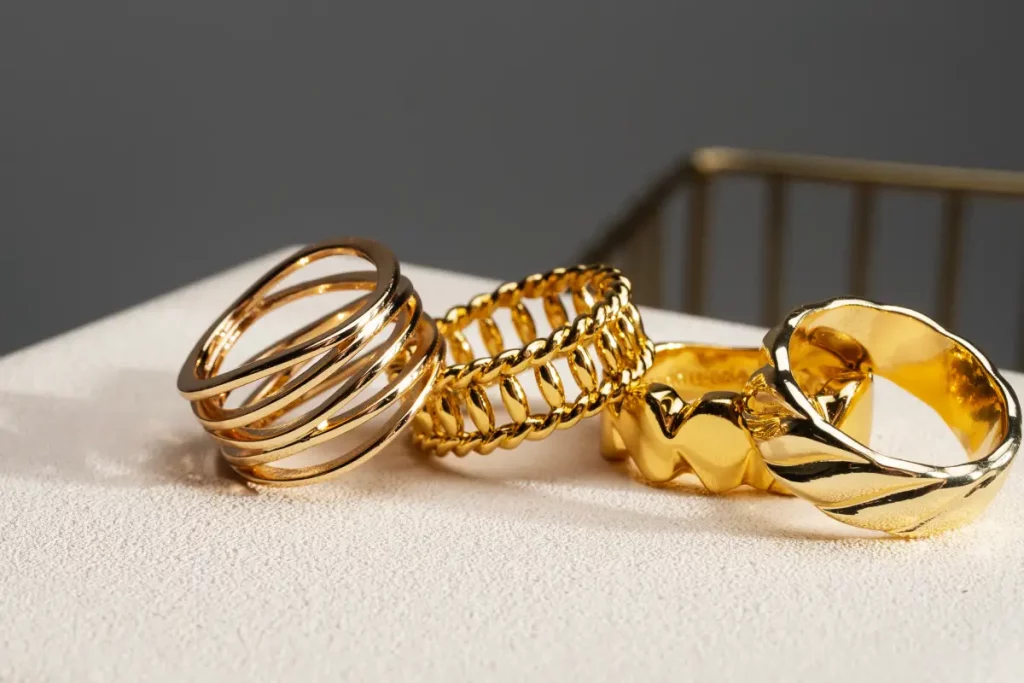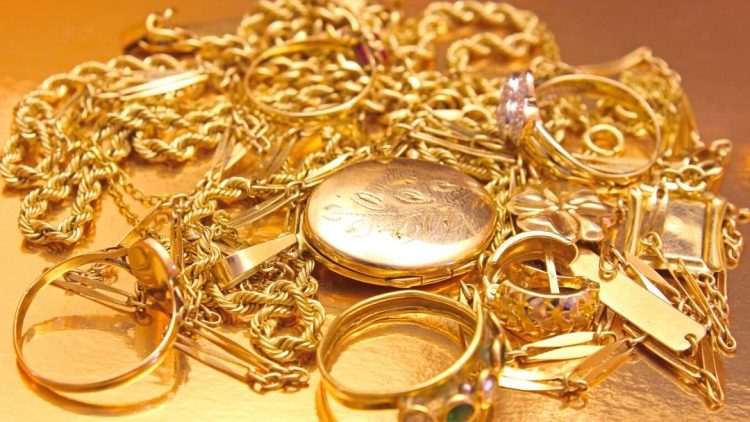Gold jewelry has always held a special place in the hearts of collectors and investors alike. With its enduring value and luxurious appeal, it has remained a symbol of wealth, culture, and timeless beauty. However, as we approach 2025, the gold jewelry market is experiencing a shift driven by changing consumer preferences, technological advancements, and economic factors. In this article, we’ll explore the key trends shaping the future of gold jewelry, focusing on emerging designs, the growing popularity of vintage and artisanal pieces, and how consumer behavior is influencing jewelry pricing.
Emerging Design Trends in the Gold Jewelry Market
The gold jewelry market is evolving rapidly, and design trends are one of the most noticeable areas of transformation. As we move into 2025, several emerging design trends are expected to dominate, driven by shifts in consumer taste, environmental consciousness, and cultural influences.
Minimalism in Gold Jewelry
Minimalism has taken the fashion world by storm in recent years, and gold jewelry is no exception. In 2025, we will see a further embrace of simple, clean lines and subtle designs that emphasize understated elegance. Consumers are increasingly seeking jewelry that can be worn daily, whether for work or leisure, without overwhelming their outfits. This trend is characterized by sleek, delicate chains, thin bangles, and small, geometric shapes.
Minimalist designs are often paired with high-quality materials and craftsmanship, which means that even though the pieces are simple, they still have significant value. As younger generations, such as Millennials and Gen Z, continue to dominate the luxury market, minimalist gold jewelry will play a key role in defining personal style.
Eco-Friendly and Sustainable Designs
As sustainability becomes a core value for many consumers, the demand for eco-friendly gold jewelry is expected to rise in 2025. Ethical sourcing and eco-conscious practices are increasingly important to buyers who want to make a positive impact on the planet. Jewelry brands are responding by offering pieces made from recycled gold and fair-mined materials, as well as incorporating sustainable packaging and production methods.
Moreover, the use of lab-grown diamonds and other ethically sourced gemstones is becoming more common in gold jewelry collections. These materials offer the same quality as their mined counterparts but with a significantly lower environmental footprint. In response to the growing consumer demand for transparency, many brands are also providing detailed information about the origins of their gold and gemstones, allowing buyers to make informed decisions about their purchases.
The Growing Popularity of Vintage and Artisanal Pieces
Another key trend in the gold jewelry market is the increasing popularity of vintage and artisanal pieces. As consumers seek individuality and personal expression, there has been a shift toward more unique, one-of-a-kind designs. Vintage gold jewelry, in particular, offers a sense of history and craftsmanship that modern mass-produced pieces often lack.
Vintage Jewelry
Vintage gold jewelry is seeing a resurgence in demand, particularly among younger consumers who appreciate its timeless appeal and the craftsmanship involved in creating such pieces. Whether it’s a 1920s Art Deco necklace or a 1970s gold bracelet, vintage pieces offer a connection to the past and a unique style that cannot be replicated by contemporary designers.
Additionally, the increasing popularity of sustainable and ethical consumption has contributed to the growth of vintage jewelry. By purchasing second-hand or pre-loved pieces, consumers can reduce their environmental impact while still enjoying the luxury of gold jewelry. Online marketplaces and specialty boutiques are thriving as they provide platforms for the buying and selling of vintage pieces, further fueling the trend.
Artisanal and Handmade Jewelry
Artisanal and handmade jewelry is also gaining traction as consumers look for pieces that reflect craftsmanship, creativity, and authenticity. Unlike mass-produced jewelry, artisanal pieces are often crafted by skilled artisans who use traditional techniques to create unique designs. These pieces typically tell a story and carry an emotional connection, which is appealing to consumers who want their jewelry to reflect their personal style and values.
In 2025, expect to see more collaborations between established jewelry brands and independent artisans, as well as an increased focus on storytelling in marketing. Artisanal gold jewelry often uses unconventional designs, intricate details, and mixed materials, which can set them apart from more conventional pieces.

Impact of Consumer Behavior on Jewelry Pricing and Trends
As consumer preferences continue to evolve, so too will the pricing dynamics of gold jewelry. Several factors are influencing how jewelry is priced and what buyers are willing to pay.
Price Sensitivity and Investment Value
Gold jewelry is increasingly seen as both a fashion statement and a store of value. As global economic uncertainty continues, many consumers are turning to gold jewelry as a form of financial security, much like they would with gold bullion. This shift is driving demand for high-quality, investment-grade pieces that will retain or appreciate in value over time.
Gold’s status as a hedge against inflation and economic instability has long been established. In 2025, with inflationary pressures, fluctuating interest rates, and ongoing geopolitical tensions, buyers are likely to seek out gold jewelry not just for its aesthetic value but also for its potential as an investment. Jewelry pieces with higher gold content, intricate designs, and historical provenance are expected to command premium prices.
Personalization and Customization
Another factor influencing jewelry pricing in 2025 is the increasing demand for personalized and customizable pieces. Consumers are no longer satisfied with generic designs; they want jewelry that tells a story or has a personal connection. Custom-made gold jewelry, such as engraved necklaces, birthstone rings, and monogrammed bracelets, are becoming highly sought after.
With the rise of e-commerce platforms and online jewelers offering customization services, consumers now have the ability to create their perfect piece of jewelry from the comfort of their homes. These personalized pieces are often seen as more valuable because they are tailored specifically to the buyer’s preferences.
Predictions on How Gold Jewelry Will Evolve Over the Next Five Years
Looking ahead to 2025 and beyond, the gold jewelry market is poised for continued growth and transformation. The key trends outlined above, such as minimalism, sustainability, and the rise of vintage and artisanal pieces, will shape the future of the market. However, there are also several factors that will drive future changes in the industry.
The Role of Technology
Technology is expected to play a significant role in the evolution of the gold jewelry market. Advances in 3D printing, augmented reality (AR), and artificial intelligence (AI) are making it easier for designers and consumers to create personalized pieces and visualize jewelry before making a purchase. With AR, for example, buyers can try on jewelry virtually, ensuring the perfect fit and design before committing to a purchase.
Additionally, blockchain technology is being explored for its potential to improve transparency in the jewelry supply chain. By using blockchain to track the origins of gold and gemstones, jewelry brands can provide greater assurance of the ethical sourcing of their materials.
The Continued Impact of Millennial and Gen Z Consumers
As Millennials and Gen Z continue to drive trends in the luxury market, their preferences will shape the future of gold jewelry. These younger consumers are more likely to prioritize sustainability, individuality, and value for money, which will prompt jewelry brands to adapt their offerings. Expect to see more collaborations between luxury jewelry brands and sustainability-focused initiatives, as well as a greater emphasis on creating pieces that reflect the personal values and identities of these younger consumers.
Conclusion
The gold jewelry market in 2025 is on the cusp of a major transformation. As consumers increasingly seek designs that are minimalist, sustainable, and artisanal, gold jewelry is becoming more than just a luxury item—it is a reflection of personal values, culture, and history. With growing interest in vintage pieces, customization, and investment-grade jewelry, the future of gold jewelry looks both dynamic and promising. Investors and collectors alike must stay attuned to these shifts in consumer behavior to navigate the evolving market effectively.



































